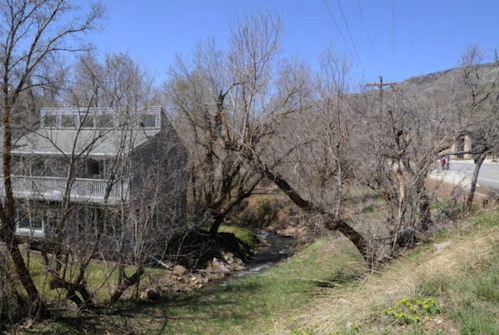
In 1846 the Donner-Reed Party cleared a trail in the canyon on its way to California, and a year later it was used and improved by Mormon settlers to reach the Salt Lake Valley. The trail remained the main entry into the Salt Lake Valley until the completion of the transcontinental railroad in 1869. Due to this important history Emigration Canyon was declared a National Historic Landmark in 1961.
Emigration Creek is located in one of the most populated west-facing canyons on the east side of the Salt Lake Valley. Due to its proximity to Salt Lake City, residential living began with homesteading in the late 19th century. With the building of a railroad up the canyon in 1907, Salt Lakers built summer cabins up and down the creek. In 1913 a hotel, the Pinecrest Inn, was built near the top of the canyon.
The railroad hauled raw materials including limestone and sandstone out of the canyon until it ceased operations in 1917. The steep canyon walls prevented farming, but the canyon did accommodate sheep grazing for nearly a century. Due to all these activities, water quality varied in the creek. Salt Lake City's Department of Public Utilities declared Emigration Creek a protected watershed above Burr Fork in the upper end of the canyon.
An attempt to annex Emigration Canyon into Salt Lake City failed and it is now classified as a township.

